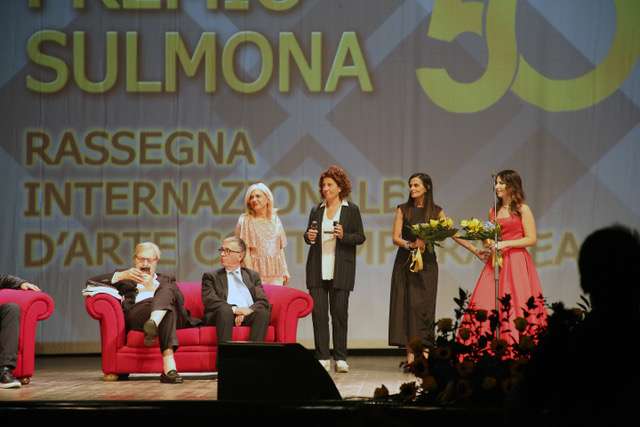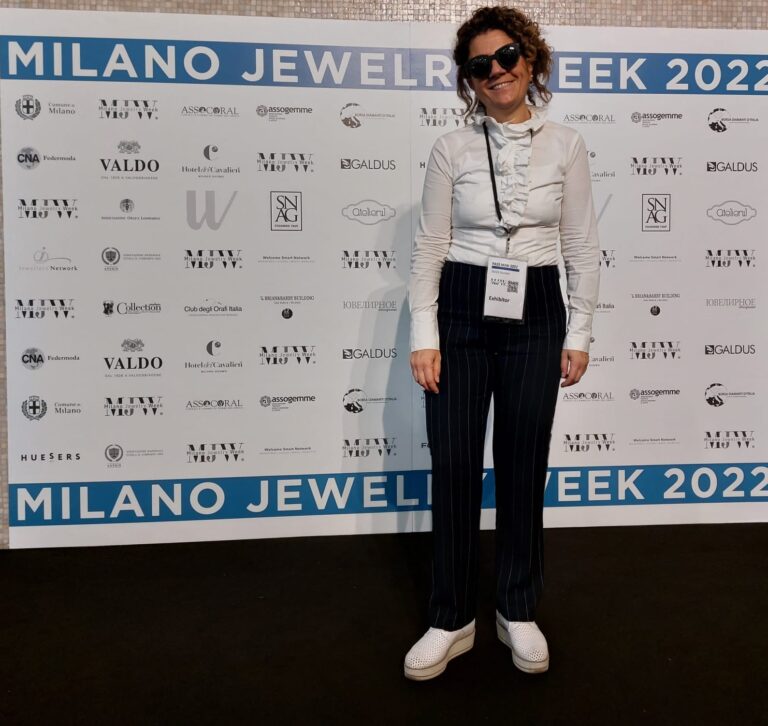On the occasion of the 50th anniversary of the International Exhibition of Contemporary Art – Sulmona Prize, ‘Il Gioiello del Tombolo’, known for its unique fusion of the goldsmith’s art and the ancient technique of lace-making, had the honour of participating as a representative of Italian craftsmanship excellence. This prestigious event, which celebrates contemporary art in all its forms, was attended by artists from all over the world, making it an important cultural and artistic crossroads.
‘Il Gioiello del Tombolo’, led by Francesco Rotolo and Federica Silvani, brought a breath of innovation and tradition to the event. Their presence was not only a demonstration of craftsmanship, but also an expression of the continuous evolution of art over time. The creations of ‘Il Gioiello del Tombolo’, skilfully combining the ancient technique of lace-making with modern and contemporary elements, offered a new perspective on how traditions can be reinterpreted and revisited in a modern context.
The participation of ‘Il Gioiello del Tombolo’ at the Sulmona Prize was a significant moment to show how craftsmanship can elevate itself to an art form. The pieces on display, characterised by meticulous attention to detail and refined aesthetics, caught the attention of the public and trade alike, demonstrating how the fusion of traditional techniques with innovative approaches can lead to surprising creations of high artistic value.
One of the highlights of the event was the presentation of the ‘Metal Perforated Anchor System for Textile Work’, a patented invention that allows bobbin lace to be integrated with precious materials such as gold and silver. This technique, which represents a meeting point between the ancient and the modern, highlighted the skill and creativity of ‘Il Gioiello del Tombolo’ in bringing the art of bobbin lace into a new era.
The event offered “Il Gioiello del Tombolo” an international platform to share its artistic vision, receiving appreciation and recognition from an international audience. The presence of ‘Il Gioiello del Tombolo’ at the International Exhibition of Contemporary Art in Sulmona demonstrated that craftsmanship, when performed to a sublime standard, can be transformed into contemporary art, combining tradition and innovation in a harmonious and meaningful way.
In conclusion, the participation of ‘Il Gioiello del Tombolo’ at the 50th anniversary of the Sulmona Prize was a triumph of Italian craftsmanship, a shining example of how cultural heritage and ancient techniques can be reinterpreted and renewed to create something unique and contemporary, thus demonstrating the vitality and relevance of craftsmanship in the modern art scene.




